I’ve been constantly updating and tweaking this “bible” for years. Some of it is informed from previous games I worked on, talks, articles but mostly just experience building levels. I’m constantly learning about the world of level design, and what is detailed below may one day be outdated, irrelevant or otherwise but, for now, consider this a small compendium of terminology we use day-to-day in level design and game development.
Themes
Themes help define a level and give it an identity within the context of the game. A level should be comprised of a dominant theme which drives its development but may contain several sub-themes within the environment to help define key locations or events.
Dominant Themes
The dominant theme is the key element driving the player’s emotional investment in the level. It helps inform all elements of a level from environment and atmosphere to game mechanics and audio.
A great theme can be described in a single sentence e.g. “Oh that level with the exploding planet!”, “The level with the Scorpion boss fight!” etc. In Uncharted 2, “Mission 16 – Where Am I?” is often referred to as “The village level”. In this case, the unique experience is that you spend a lot of time stuck in a Tibetan village, slowly walking around interacting with civilians. In an action game like Uncharted 2, this really stuck out and became a memorable experience.
Some examples of results derived from level themes might be:
- I want the player to feel like a hero!
- I want the player to feel anxious and tense.
- I want the player to feel terrified!
- I want the player to feel clever.
Sub-Themes
While dominant themes are used to define entire levels, sub-themes are used to define areas and events within the individual levels themselves.
In multiplayer levels, sub-themes are used to define key areas of the level and create spacial-awareness for players. E.g. “I’m in the refinery”, “The enemy is in the lightning nebula”. By defining each space uniquely, players can derive a better understanding of the level more quickly.
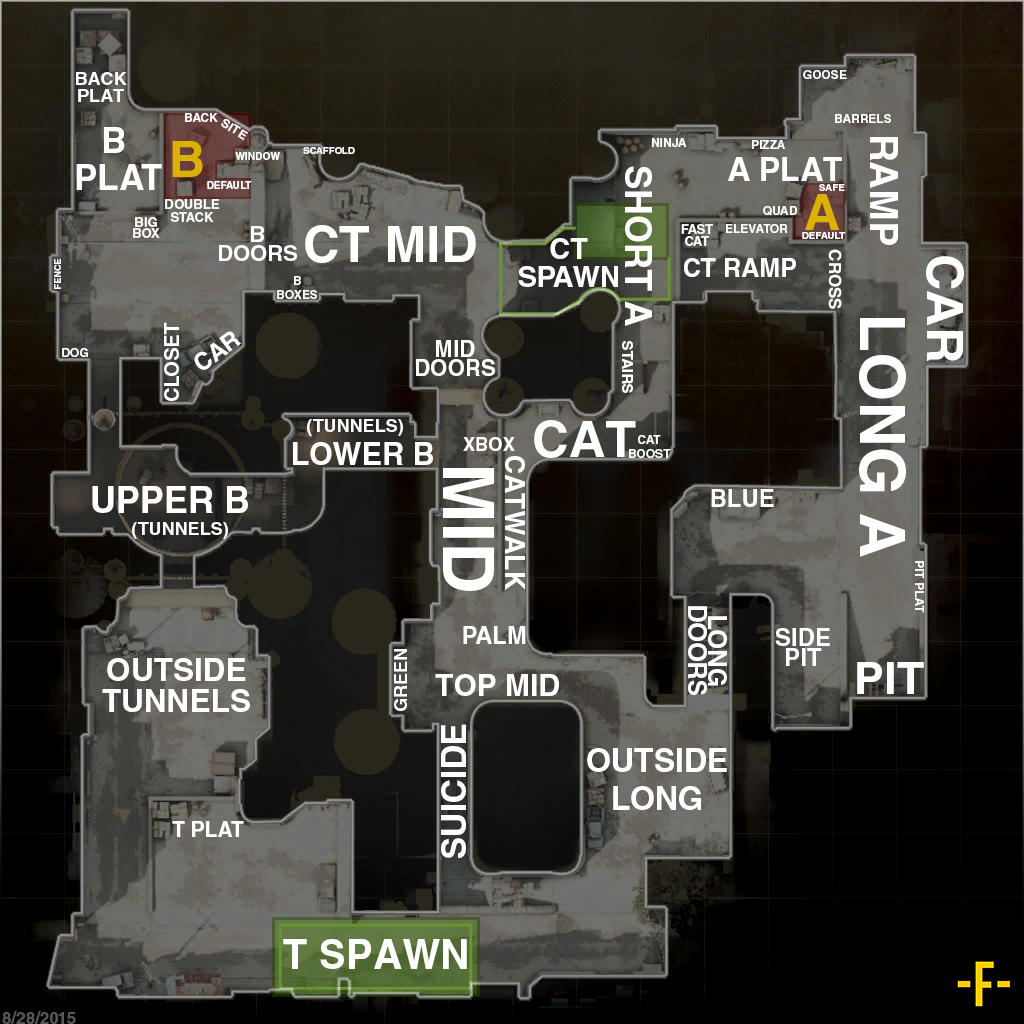
While sub-themes can be reused across levels, a poor dominant theme is exemplified by levels that can share the same description e.g. “The space level”. In a space-sim like Star Citizen for example, this is not a good use of theming. It’s perfectly acceptable for ten levels to all be set in space, but they must each have another unique theme that separates them from one another.
Pacing
Narrative driven games all exhibit some sense of pacing. The goal for teams developing narrative games is to ensure that that pacing “graph” is understood and utilised to effectively hold the players attention, accentuate moods and deliver engaging experiences.
A basic example of pacing might be: an exciting, action packed sequence such as a vehicle chase being followed by some downtime, such as a puzzle or exploration sequence, before ramping up into a combat sequence. The two “high tempo” moments (chase and combat) are emphasised thanks to the “low tempo” break in between them.
In single player levels, themes are used to help craft the sense of pacing. If your chapter ends with a massive, exciting boss fight, you might want to start the chapter slowly. Tight, narrow corridors and claustrophobic environments would help deliver that slow experience, and would really contrast against the exciting battle at the end, emphasising the action.
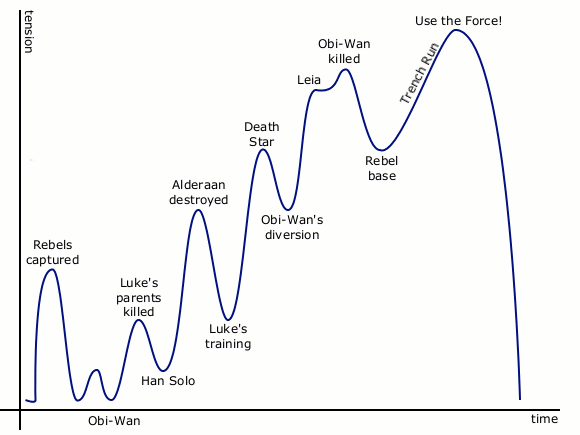
Signposting
Levels should be set up to allow the player to quickly orient themselves within the environment. This can be achieved through signposting, which involves setting up structures around the level that act as landmarks for the player.
In multiplayer levels signposting is crucial, as players will want to learn layouts as quickly as possible so they can focus fully on fighting other players without worrying about getting lost or confused. It also improves communication between players when they have points of reference to describe to one another.
In single player levels, the player’s next goal or destination should be signposted to help guide the player. It should be visible enough to reduce frustration but shouldn’t remove the sense of exploration and challenge. If the player is challenged with uncovering the route, then the steps to achieve this can be signposted through lighting, audio or clever game mechanics.
“Show Don’t Tell”: This concept should apply to any challenge placed before the player, including exploration. The player should always be aware of their current objective and have an understanding of what they need to achieve, but the steps involved in achieving it are theirs to discover. We help the player to solve these challenges through aids such as signposting.
By placing unique structures at key locations around a level we can introduce a basic concept of “signposting”.
“Weenies” are distant landmarks that indicate the direction and composition of a goal.
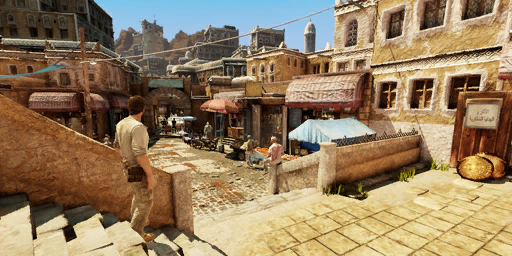
The term was coined by engineers working on Walt Disney World, and was used to refer to buildings that stand above all the others and draw the eye of visitors, enticing them to new areas of the park.
“Denial spaces” are an architectural concept where the distant goal or “weenie” is lost to the player or obscured. These make reaching the goal more rewarding and the route there more interesting.
“Hero Props” are the key structures within a level and can often also be “Weenies”. These usually involve the most work to get right from both art and design. A “Hero Prop” is typically budgeted higher than other structures in a level.
Examples include the Mammoth vehicle in Halo 4’s “Reclaimer” mission or the dam generator in Crysis 3’s “Dam” level.
Other points of interest in a level can even be developed solely through unique use of lighting and audio. Use these to draw the player’s attention by combining them with scene composition to indicate waypoints and goals. Changing the lighting and atmosphere of a familiar area can also make it distinct and unique within a level, which helps asset reuse and budgets.
Level Boundaries
Level boundaries are split into two types: Hard Boundaries and Soft Boundaries.
Hard Boundaries
Hard Boundaries are physical walls or obstructions that prevent the player from leaving the level. They are easier to understand from a player’s perspective but they add to a levels sense of confinement and restrictiveness.
Soft Boundaries
Soft Boundaries are traditionally found in open levels such as in space-sims or multiplayer levels in games such “Battlefield”. When the player steps over an invisible boundary they are presented with a message informing them to return to the playable area.
Vistas
Vistas are observation points in a level that give the player a sprawling view of an interesting landscape.

These landscapes can be inside or outside the playable area.
Inside Playable Area
A vista that looks out across a playable area may help the player see gameplay opportunities, story events or objectives. These are empowering moments for players and allow them the opportunity to obtain foresight of new encounters and develop tactical strategies ahead of time. They can also be considered “vantage” points.
Playable area vistas should also show the player multiple route options through a space while also hiding areas you want the player to uncover and explore.
Vistas within the gameplay space can also be used to compose moments of narrative storytelling for the player to observe without having to force the player camera out of the player’s control.
Outside Playable Area
Vistas that look out to non-playable space are usually intended to create a spectacular moment or “wow” moment within a level. These can be utilised to enhance moments of “downtime” within a level.
A vista that looks out to non-playable areas can also give levels a sense of scale and openness while keeping the actual playable area quite restricted.
Visual Language
We can enhance the players understanding of an environment by developing a clear visual language that is consistent across our levels. This will assist players in understanding such things as; what areas of a level they can access? What objects can they interact with? etc.
Readability
Readable environments are ideally devoid of clutter and have reduced visual noise. That is not to say they are not complex or interesting, but they should present gameplay opportunities and routes clearly without frustrating the player.
Consistency
Consistent environment rules such as attributing a specific light colour for “usable” equipment (blue LED’s or illuminated monitor screens) and colour coding environmental mechanics (red barrels = explosive barrels or yellow = climbable ledges in Uncharted) can give the player familiar elements to help them more quickly understand any new environments.
Telegraphing
Some environmental features will have components that may cover even larger areas of the level. These can be used to guide the player toward an object or event. Examples include wires leading to a generator, literal signs that warn of dangers such as mines or narrative elements that foreshadow a specific environment.
Games such as The Last of Us have good usage of foreshadowing in environments. Usually you are given a hint of what’s in store later in the level by finding survivor notes or environmental storytelling early on.
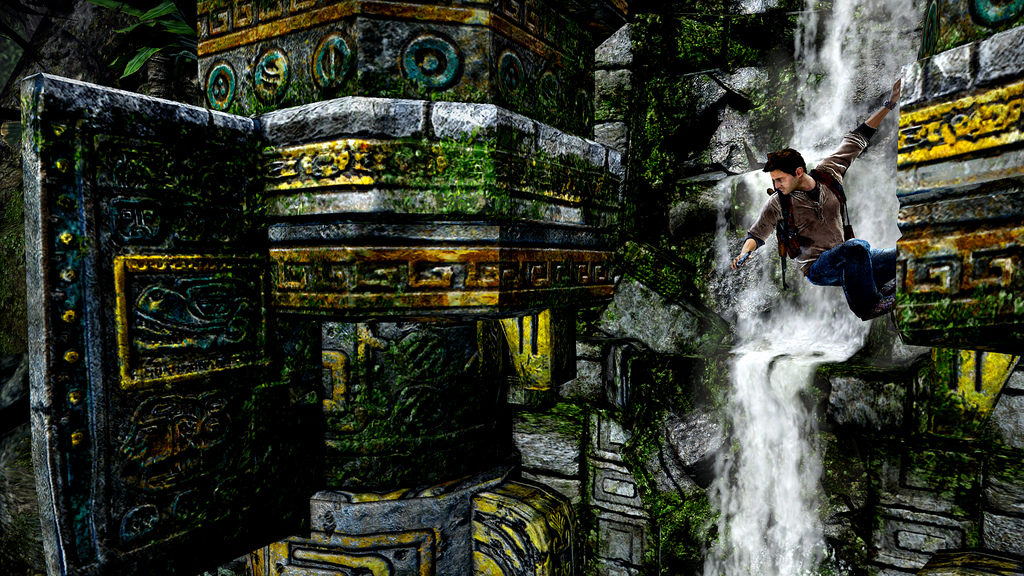
Wow Moments/Set Pieces
Wow moments/set pieces are a kind of in game cinematic. They are any take-away moments of spectacle that happen in a level and should literally leave the player thinking (or shouting!) “wow!”.

Some “wow moments” can be completely player generated (see Battlefield MP), however most often these will be scripted sequences developed for a particular level.
They are infrequent in order to preserve their impact as well as the fact that they are usually expensive to create.
Gates
Within the context of level design, gates are methods by which a designer controls the linear progression through what would seem to the player to be non-linear worlds.
Hard Gates
Hard Gates are used to halt the player from progressing any further until they complete an objective or similar criteria.
A classic example of a gate in a level is the “keycard” which is required to open a sealed door.
Soft Gates
Soft Gates are similar in principal to standard Gates, except they can be completed at any time and only serve to slow the player down.
A Soft Gate will slow the players progress down through a map, but the criteria to bypass it is not particularly challenging.
Examples of soft gating might be a corridor blocked by steam escaping from a pipe, with a valve nearby to turn it off. The gate has succeeded in preventing the player from charging ahead but the means by which they bypass the gate are simple, if not time consuming.
Objectives and Rewards
Objectives
Objectives should be immediately obvious to a player in terms of what they must accomplish.
Trial and error should be kept to a minimum. If a player has a solution that makes sense to them, the game should accommodate it.
How to accomplish an objective is for the player to discover, however hints and signposting of objectives will be crucial to resolve frustration.
Rewards
Players should be rewarded frequently with items, story snippets, currency or even a new vista to observe.
This is crucial feedback to keep the player feeling invested in a level.
Compulsion Loops
A compulsion loop is a process whereby the player is rewarded for completing a task and wishes to repeat the action for a similar reward.
Repeating the action several times accumulates several rewards, which can be used to accomplish an even tougher task.
Each “compulsion loop” can feed another in this way, generating minute-to-minute and hour-to-hour goals.
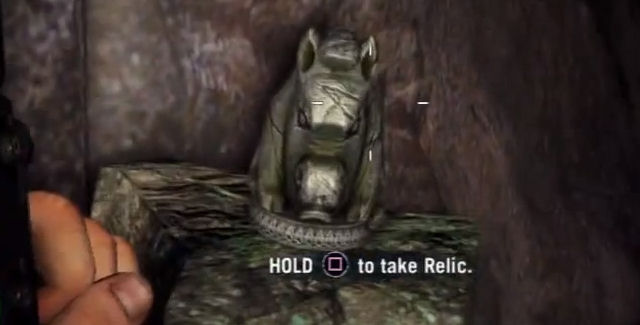
E.g. I want to collect 10 relics in Far Cry 3 tonight (short task requiring exploration) OR I want to unlock 2 new signature weapons (longer task requiring 100 relics)
Players can set the scope of their goal for differing play sessions this way.
Levels should accommodate immediate goals for players as well as long term goals.
Level Design Practice
Arena
The term “arena” refers to a specific area within a level where the player will encounter some kind of challenge, event or obstacle.
Arenas are non-linear spaces, meaning they offer players multiple options in combat and opportunities to explore the environment. They can also include sandbox elements that allow players to formulate unique, tactical opportunities and multiple ways to complete objectives.
Arenas can be quite large but have well-defined perimeter borders. Players should always have a decent sense of the scope of the arena upon entering it, even if some parts are obscured from sight.
Arenas are generally pro-active gameplay spaces. The player will have an opportunity to choose when to enter combat and can dictate the pacing and flow more than a reactive space.
Fronts
A “front” is generally a location in a level where an individual or group of faction members establish a foothold. Usually this is in direct defense of the players primary goal, but it is advisable to change up the fronts of battle (or battlefronts!) during a combat sequence to keep the encounter fresh and keep the player moving.
Directed Sequence
A “Directed Sequence” is a linear space that usually includes a moment of scripted gameplay that the player must engage in. These can include set pieces, forced combat encounters, cinematics or on-rails sections.
Directed Sequences are reactive and can be used to control the pacing and flow of key moments in the campaign more tightly than arenas.
Exotic Gameplay
Exotic Gameplay describes any sequence of gameplay that is not part of the core mechanics set. These might be sections developed exclusively for a single level or section of a level. Exotic Gameplay can provide an immersive, cinematic setpiece to the player within a controlled environment that does not hamper or imbalance existing core gameplay mechanics.
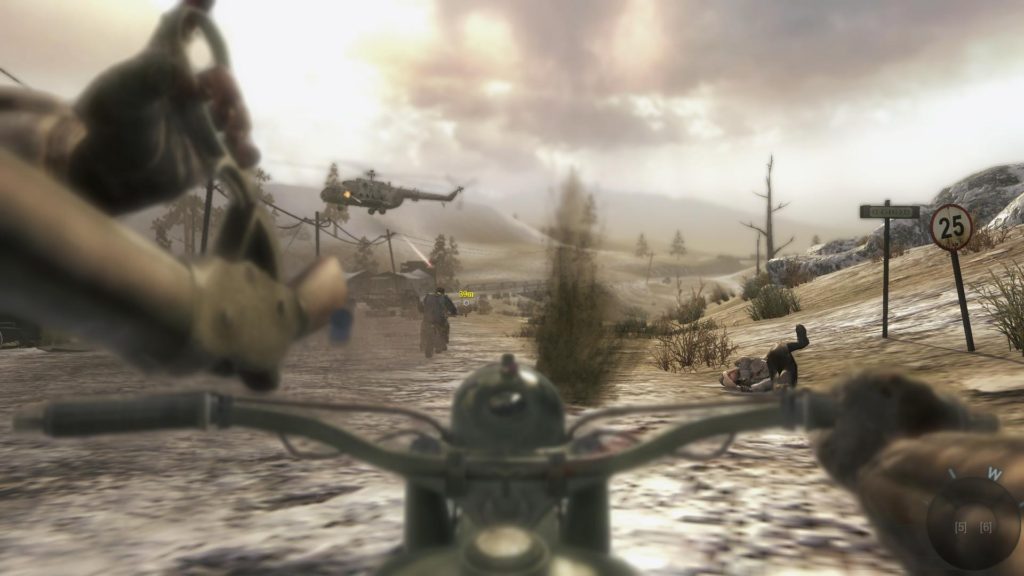
Non-Linear Design
Illusion of Non-Linearity
Sometimes even splitting a single corridor in two can give a space the illusion of non-linearity. Simple decisions such as this keep the player engaged with the level and exploring new options.
Verticality
Arenas are not restricted to a single plane and vertical routes can be used to gain strategic advantages in combat.
These routes are empowering and keep the play space interesting and dynamic, but can also introduce imbalance to an encounter quickly.
If a level features a vertical route, AI should be able to reach any area the player can reach.
Even slight variations in terrain height can keep a level interesting. Any pathways leading to higher sections must be readable however, as multi-tier levels can quickly become noisy.
Vantage Points
Vantage Points are elevated locations in an arena that give players key, tactical advantages by providing an overview of the area.
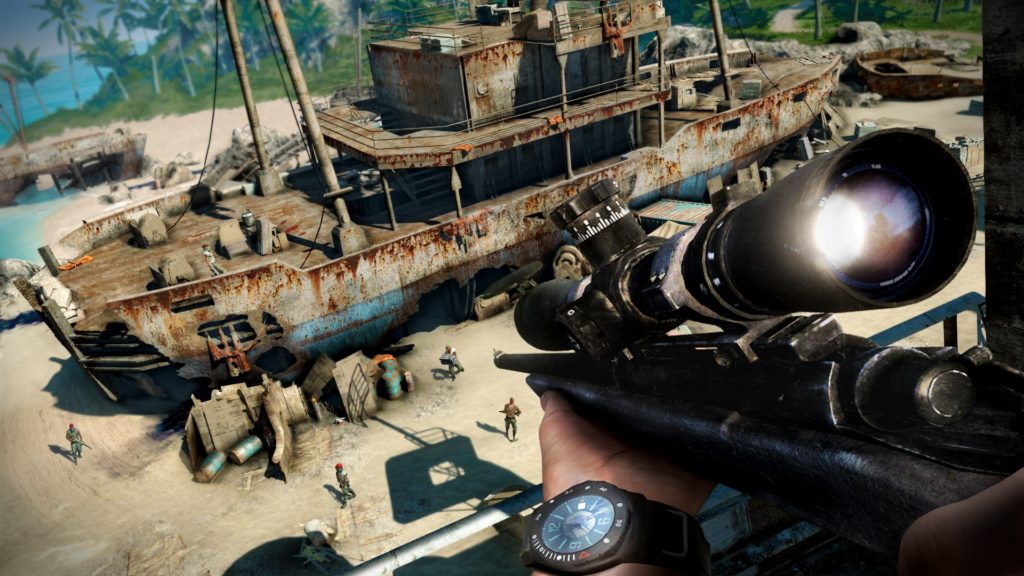
Example of vantage point in Far Cry 3
- Overview – The player can get a good initial idea of the arena, its scope and its contents.
- Observe – The player can see any AI in the scene doing something. (Patrolling, talking, working). They can also see their objective. (The next doorway, the switch, the kill target, the kill targets room etc). Also observable are sandbox elements the player can harness within the arena.
- Plan – The player can formulate a plan of action based on the intel they gathered from a vantage point.
- Execute – The player leaves the vantage point to execute their plan. Execution does not always go according to plan, however, and so the arena is designed for dynamic play styles instead of a strict execution method.
- Reward – The player is rewarded. Rewards can take the form of equipment and currency OR story information, a cool cutscene or wow moment!
Linear Design
When is it ok to be linear?
There are occasions where linear design is preferred for gameplay, pacing or technical reasons.
- Directed Sequences
- Exotic Gameplay
- Valves
- Valves are corridors that connect two areas of a level. They can be used to stream one area out and the next one in.
- Backgating
- Backgating is the process of disallowing a player to return to the area they just left.
- g. forcing the player to fall down a steep drop. Closing and locking a door behind them etc.
- Exposition
- A linear section of a level is useful for delivering key story information that is pertinent to the player.
- Composition
- Linear sections can ensure the player is facing a certain direction if the designer wants to frame an event or vista for the player to observe.
- Experiential
- When it enriches the gameplay experience designers may want to include a linear path through an area.
- g. shimmying across a ledge, walking through a crowd, crawling through a tunnel.
Cover
Cover for FPS battles is generally split into two categories: Hard Cover and Soft Cover.
Hard Cover
Hard Cover is any solid object in the gameplay area that the player can use to block incoming fire and break line of sight. It offers complete protection from projectiles.
Examples include concrete barriers, walls and pillars.
Soft Cover
Soft Cover is any object that obscures the player’s profile and can be used to hide from enemies or distort their perception of the player. This cover does not protect the player from projectiles however. Examples include cloth, vegetation, wood and glass.
When a player enters a combat scenario they must be able to immediately identify the cover available to them in the area. Consistency in cover through metrics will play a huge role in being able to identify what will protect the player and what won’t.
Cover should ideally sit around half-height or full-height. Players become frustrated when attempting to take cover behind an object that still leaves part of their profile exposed to incoming fire, especially if it results in death! If something looks like it should offer cover, then it should be the correct height.
Spaces should have interesting cover layouts that include a mix of this full and half-height cover. Cover should be used to block long lines of sight in a level and promote “flow”.
Soft cover can also be used to this effect, but players will sometimes expect to move through soft cover (if it’s tall grass, a bush or a breakable wooden crate) instead of around it. This can open up more risky/stealthy routes for players to utilise.
Cover should never be scattered around a level at repetitious, consistent intervals. Not only does this create too much visual noise and chaos, it also hinders pathfinding for AI and causes a lot of snagging for players, restricting flow. Cover should instead be “clustered” into interesting groups and placed strategically.

The space between cover is as important as the cover itself. Players should be forced to make risk/reward decisions about moving between cover locations. A dash between two cover objects can be an exciting choice as opposed to a monotonous chore. The cover should promote tactical, risk/reward movements across the battlefield and should not just be laid out in a column down the level. The term “rope swinging” is sometimes used to describe how the player moves between cover.
Cover layouts should introduce opportunities for flanking tactics. No single cover object should be so overpowered that all attackers must attack it from the same direction. Players should require battlefield awareness to stay alive, as AI should be able to flank cover from multiple directions.
Cover layouts should give players a chance to fall back or retreat when overextended. Players are still susceptible to death if they make poor choices, but a little leeway in the form of retreat routes helps keep the pace and flow of combat fluid. This also adds to the sandbox feeling of an arena, as challenges change over time and are never static.
In an arena, cover layouts should promote non-linearity within a confined space. If the player only has a limited amount of cover to use, the space will feel very restrictive regardless of how large the environment might be. By planning multiple routes and vantage points through a space, these areas feel less linear and much more open. Cover should be used to guide players around the level, much like a multiplayer level, and promote traversal and exploration. However, in this way cover layouts can also be used to create a specific narrative experience, so knowing how to utilise the mechanics of your game to create these moments is important.
Sandbox Gameplay
Player Agency
In level design, a sandbox space is one which provides players with a greater extent of player agency. The player should have many tools available to them to make meaningful choices with regards to combat and objectives. There should rarely be one, singlular, scripted method to completing an objective and instead the player should utilise emergent game rules to accomplish objectives however they want.
Delivering this level of player agency requires a holistic design where game mechanics never have a singular bespoke purpose, and instead can be used in as many ways as the player can imagine. The properties of a mechanic should be modelled to interact with as many other mechanics as the player expects.
E.g. A blow torch can be contextually restricted to only open sealed doors OR it can be used to open any sealed doors AND burn paper AND burn wood AND damage enemies etc
Readable, Consistent Mechanics
By creating consistent rules within levels, players will learn the language of the game through repeated interactions with each mechanic.
By modelling realistic properties within each asset/mechanic, players can utilise them however they want and expect each asset/mechanic to react accordingly (affordance).
Players entering a new space will recognize familiar mechanics, allowing them to make more informed tactical decisions and formulate unique strategies.
Players will be able to personalize their play styles, which is why it is crucial to develop features that work within a holistic environment. Any elements in a play space that are too bespoke will deny players the ability to personalize their experience.
Levels should try to accommodate a high first-try success rate for player actions. This doesn’t mean the game should be easy! The challenge for players is formulating a tactic or solution, but executing the tactic once they’ve figured it out should not be frustrating. For example, if the player needs to drag a crate from one end of a level to another, the crate should fit down the corridor without having to snag over objects or frustratingly snag on walls. This could lead the player to believe the solution they thought they had figured out isn’t actually the correct one.
Interior Spaces
Flanking
Any combat spaces should enable the player AND AI to flank one another. Interiors are a great way to accomplish this. Interiors should ideally have more than two entry points to keep players on their toes and watching their corners.
Crossfire
Crossfire keeps action interesting. Plan for areas where players and AI can establish “fronts” or bunkers. Height variation and verticality can be used to keep these spaces diverse.
Cover
Interiors are one of the most obvious areas of cover for players. Take advantage of this by rewarding players for exploring interiors with ammo or new routes inside. AI should always be able to flank, ambush or flush a player out of an interior. This will keep the action flowing around the level and keep combat feeling diverse as well as emergent.
Exploration
Interiors can hold rewards inside them that benefit players who explore each environment. New sandbox toys could be hidden inside or telegraphed with exterior geometry, enticing players to venture in.
Break Up Linear Spaces
Interiors are a great way to break up an environment. Ensure players who enter an interior space have two or more ways to exit it.
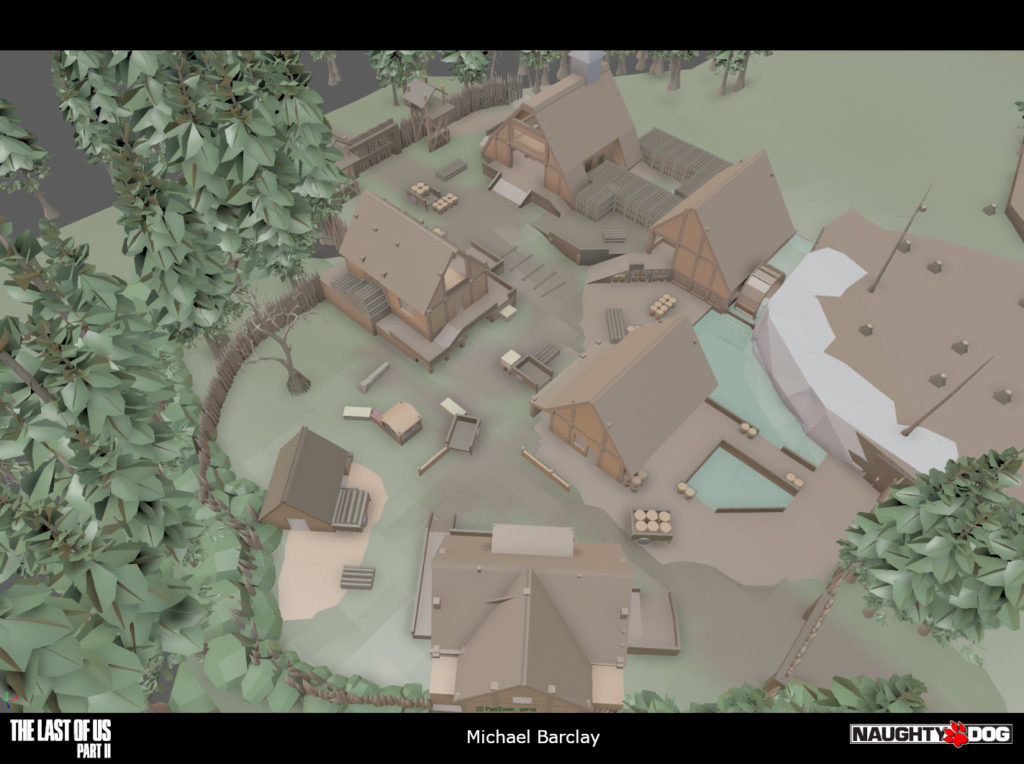

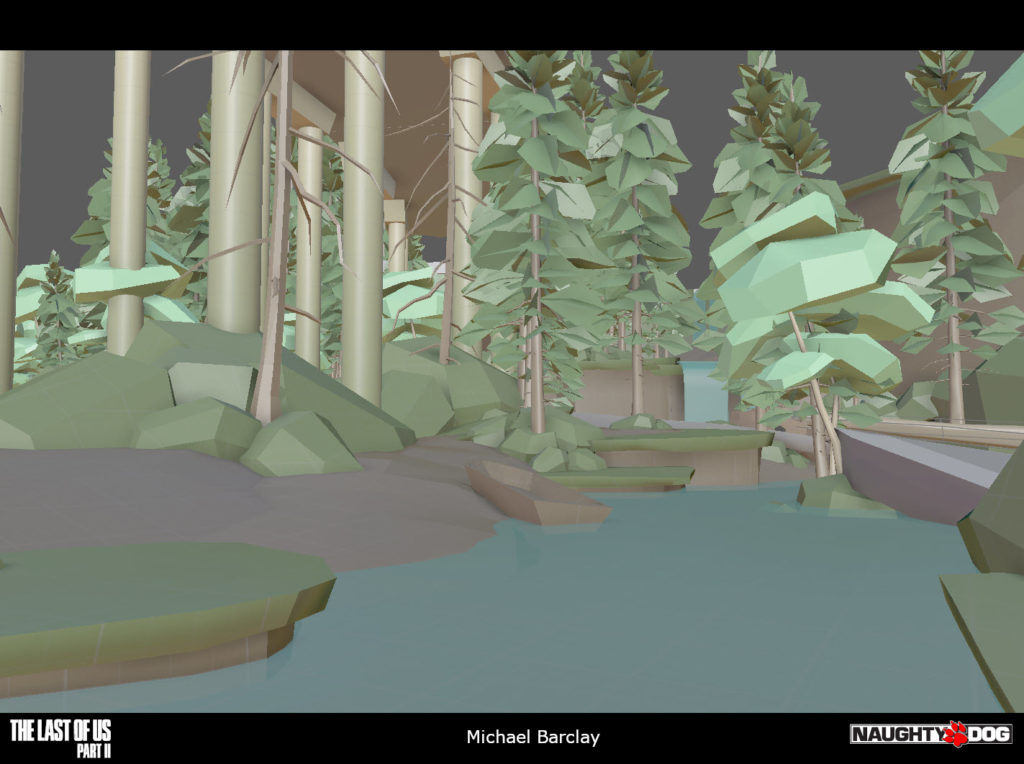


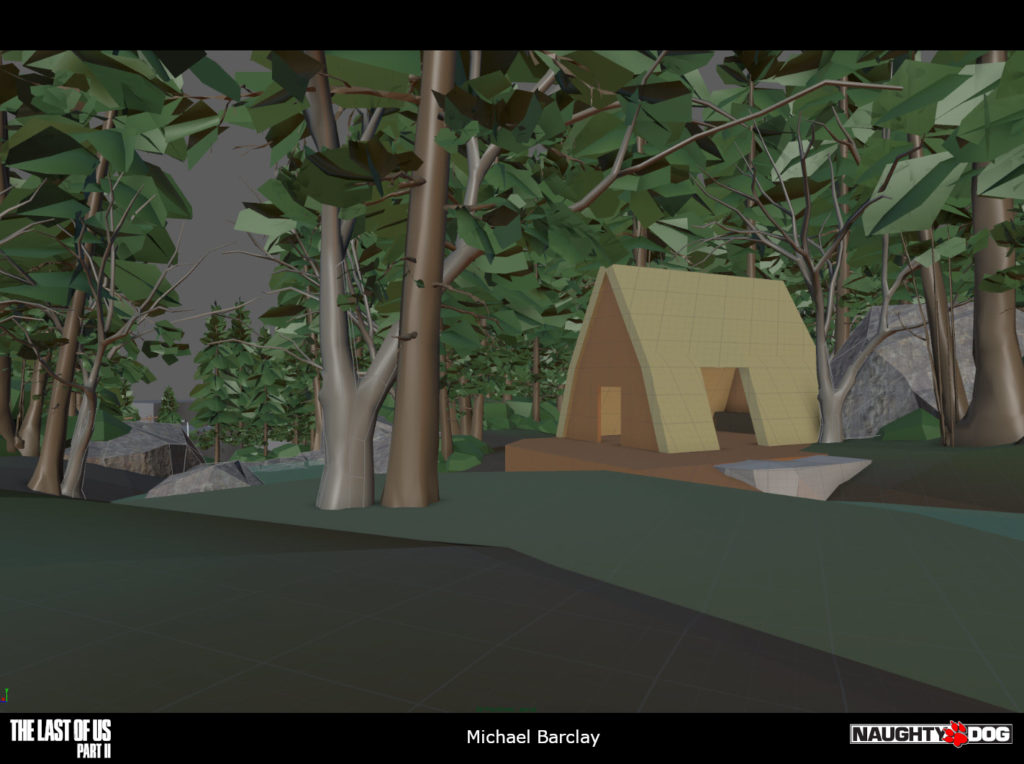
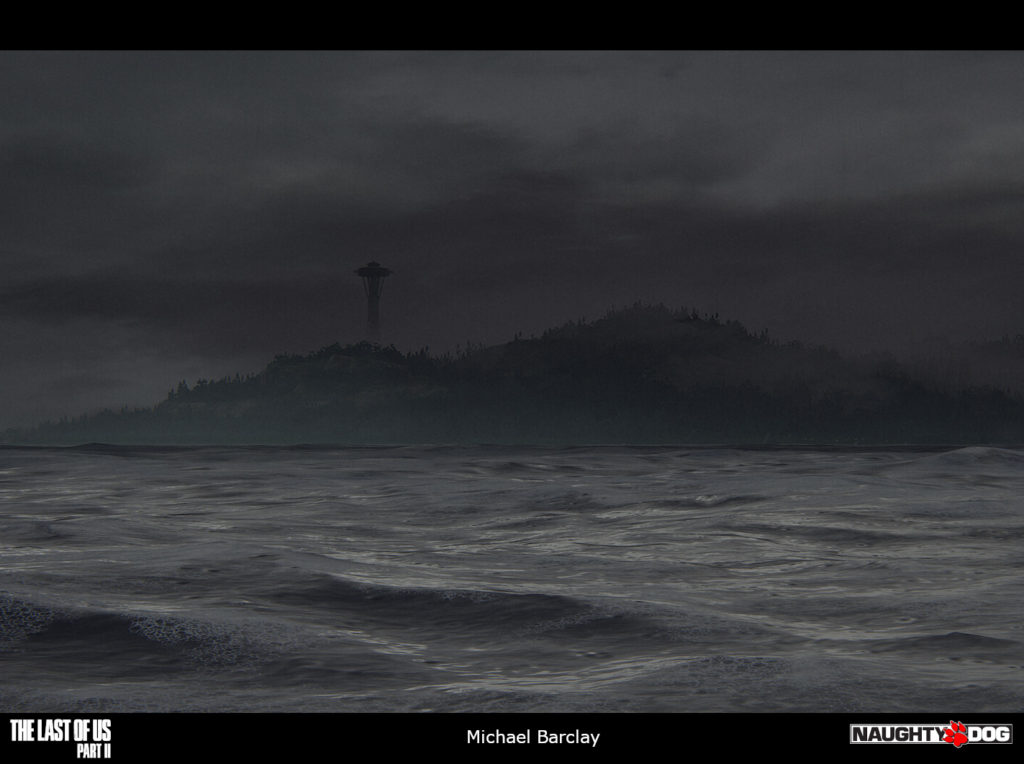
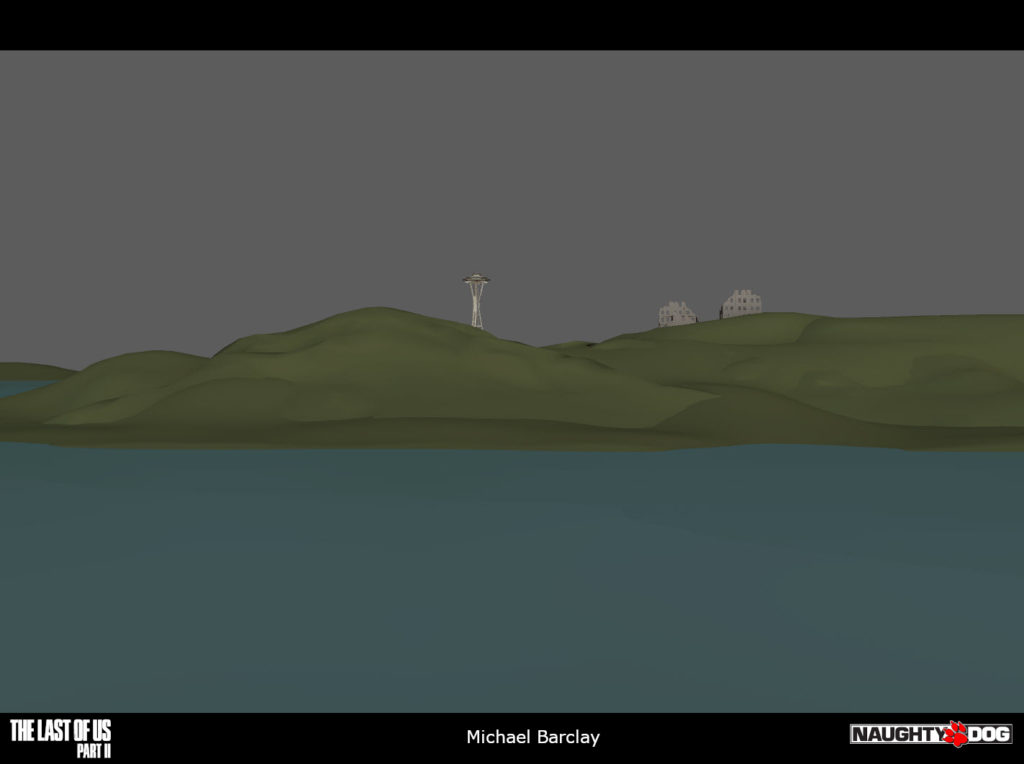

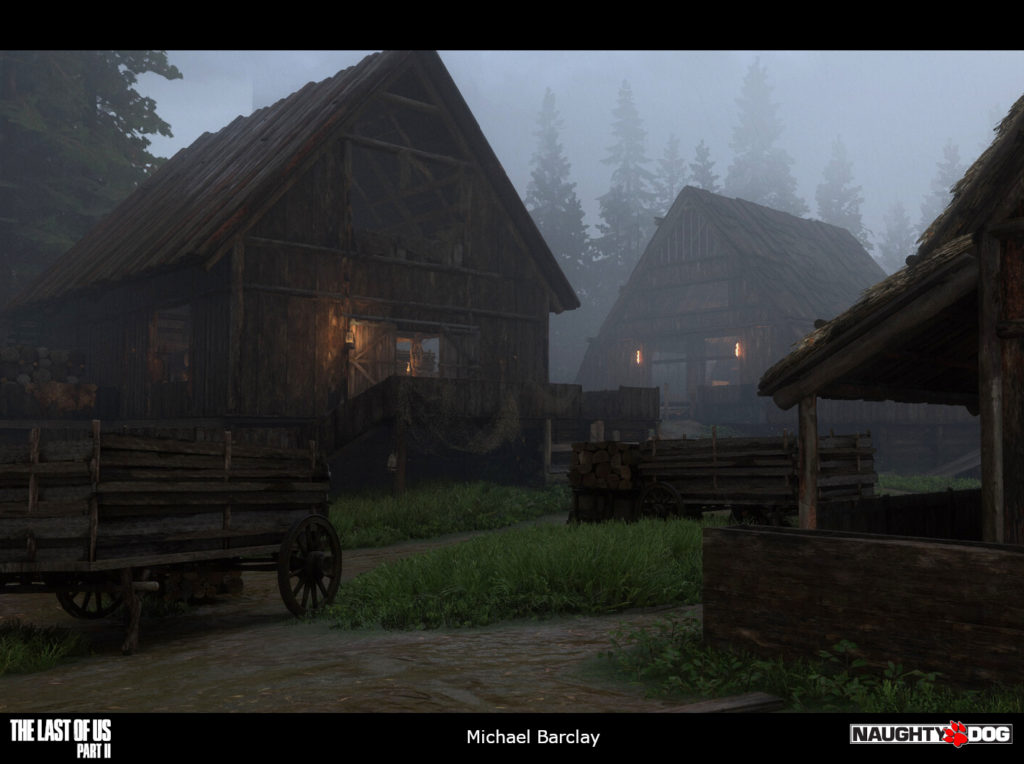


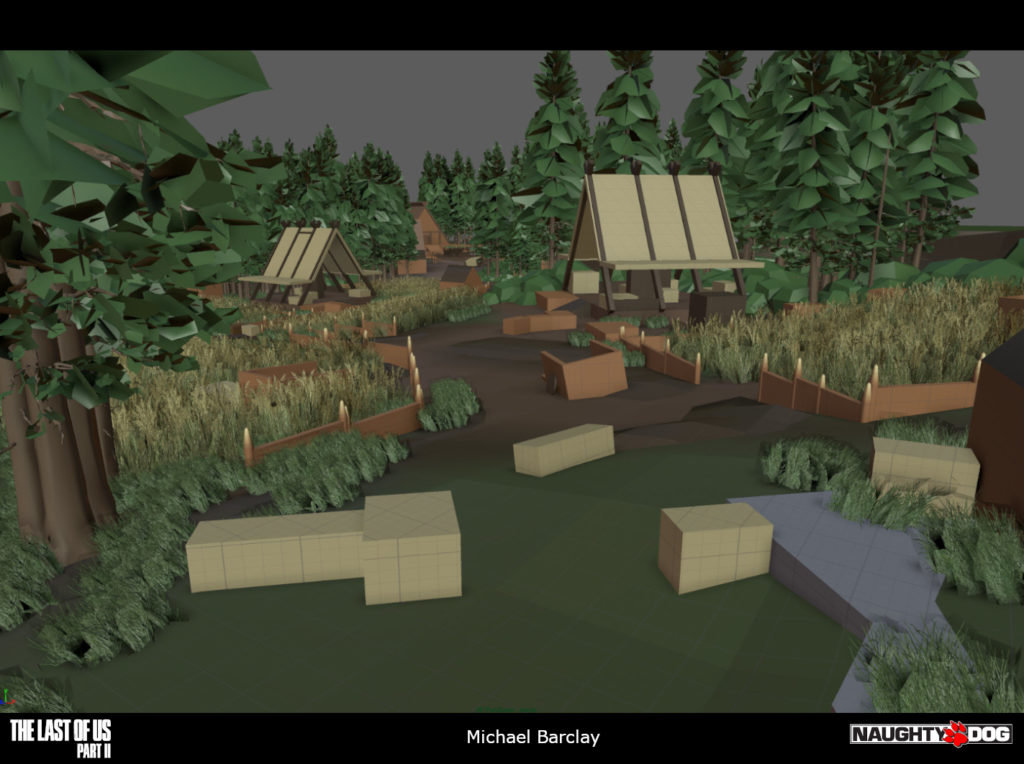
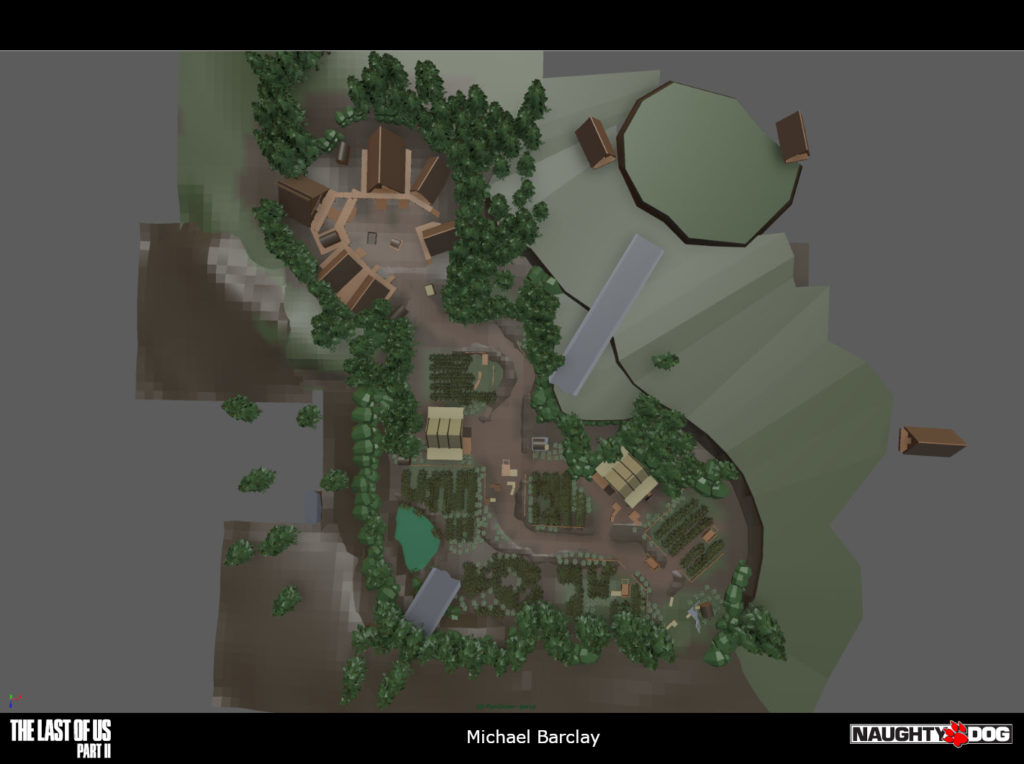

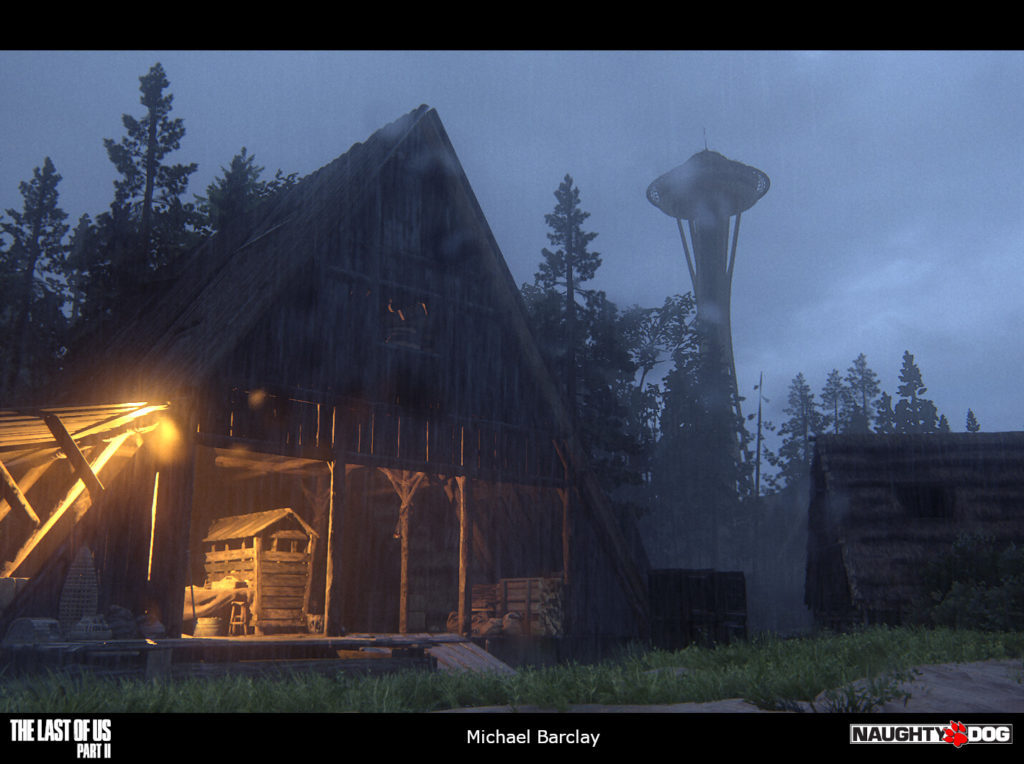
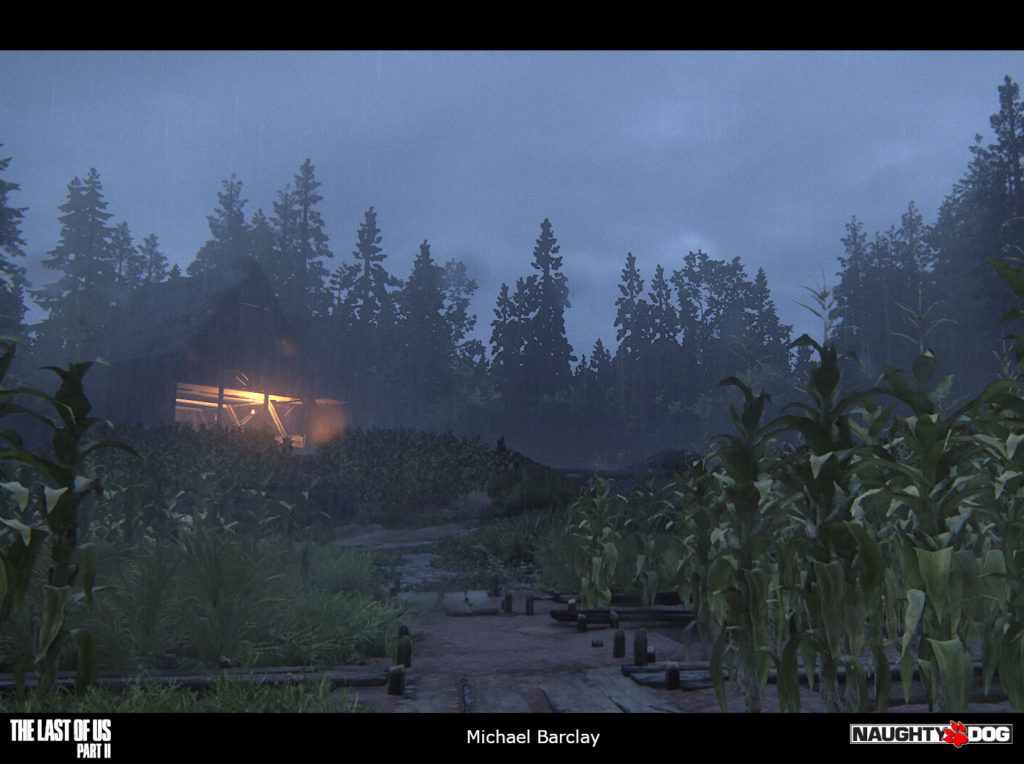
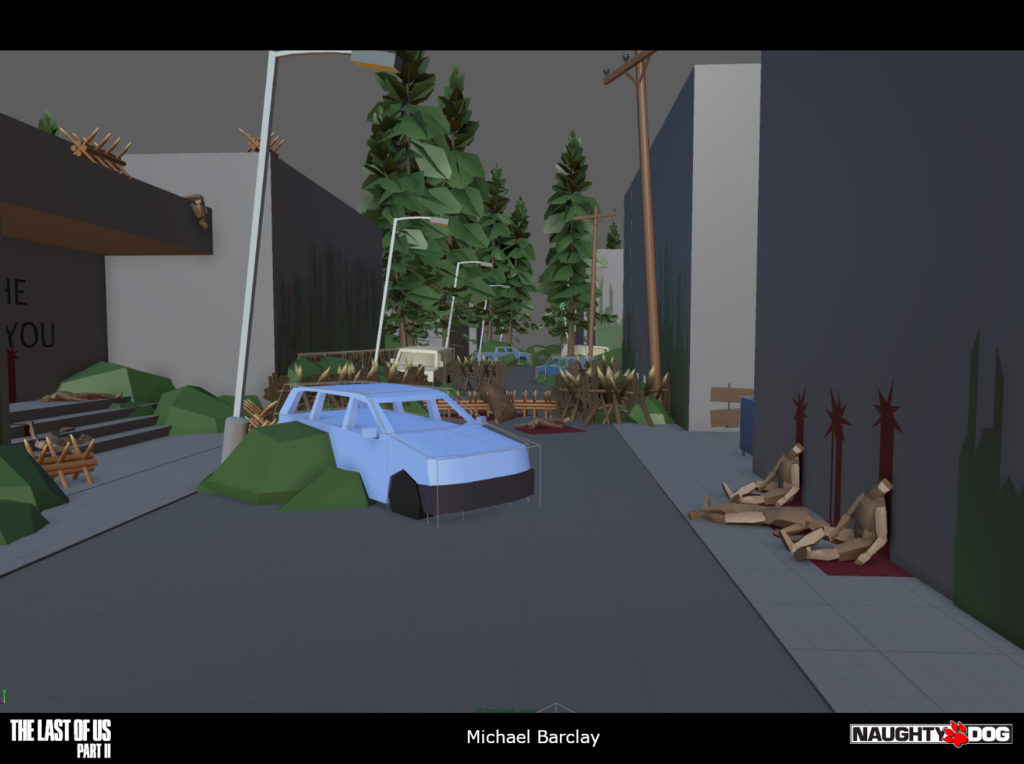
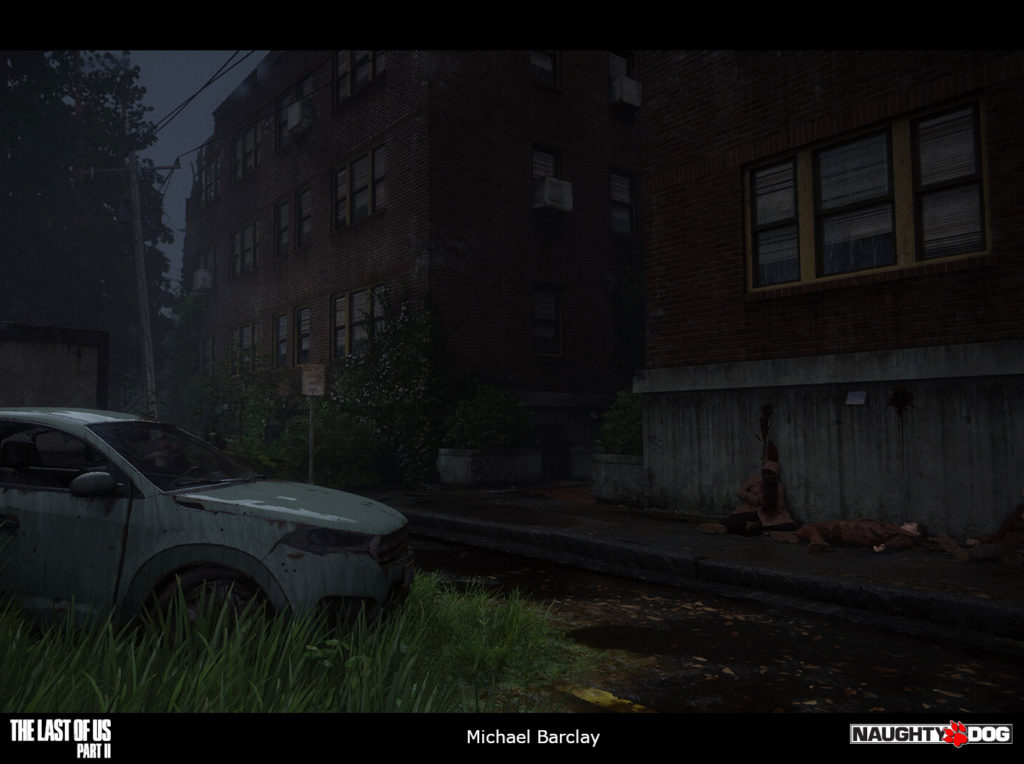

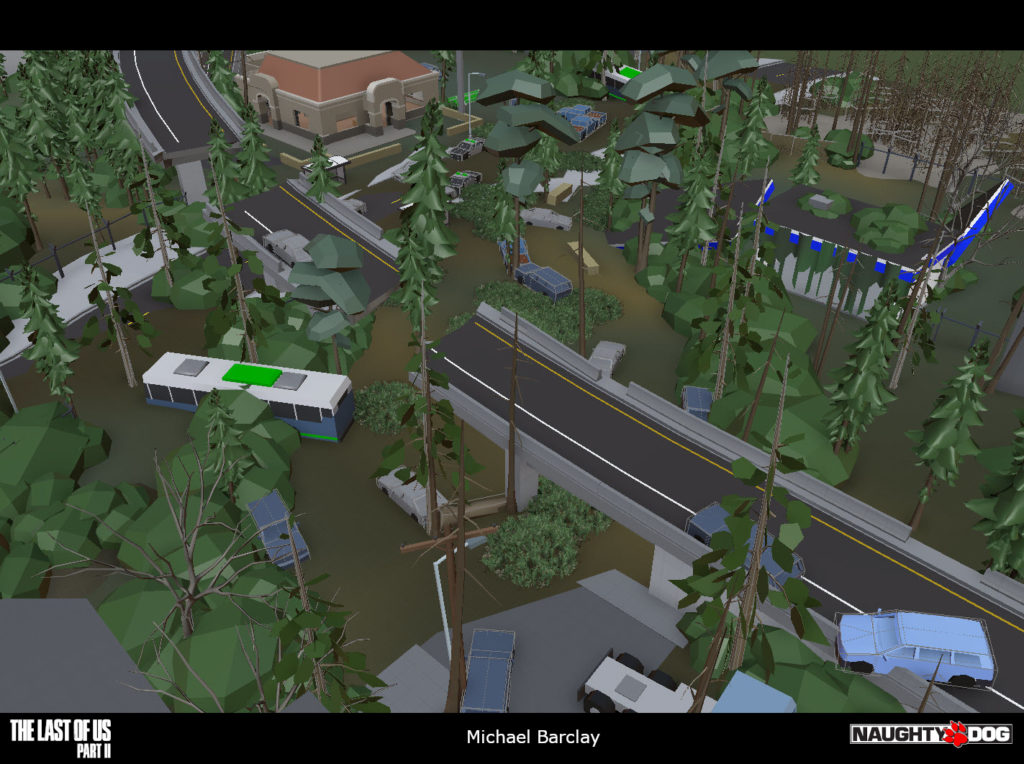
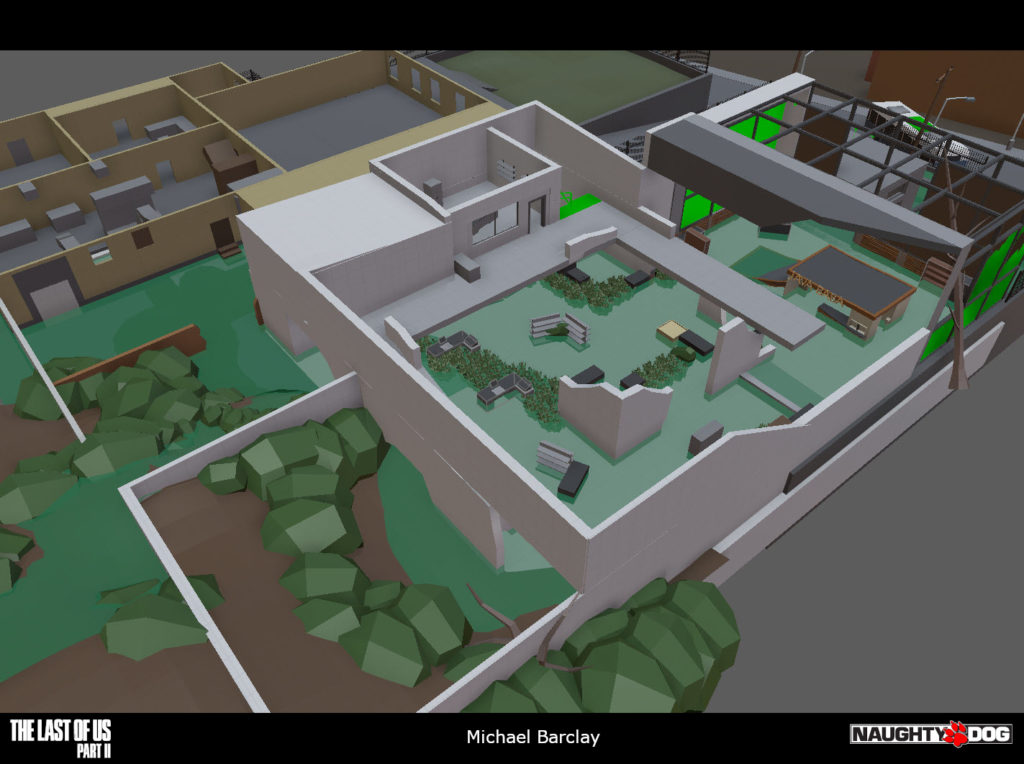



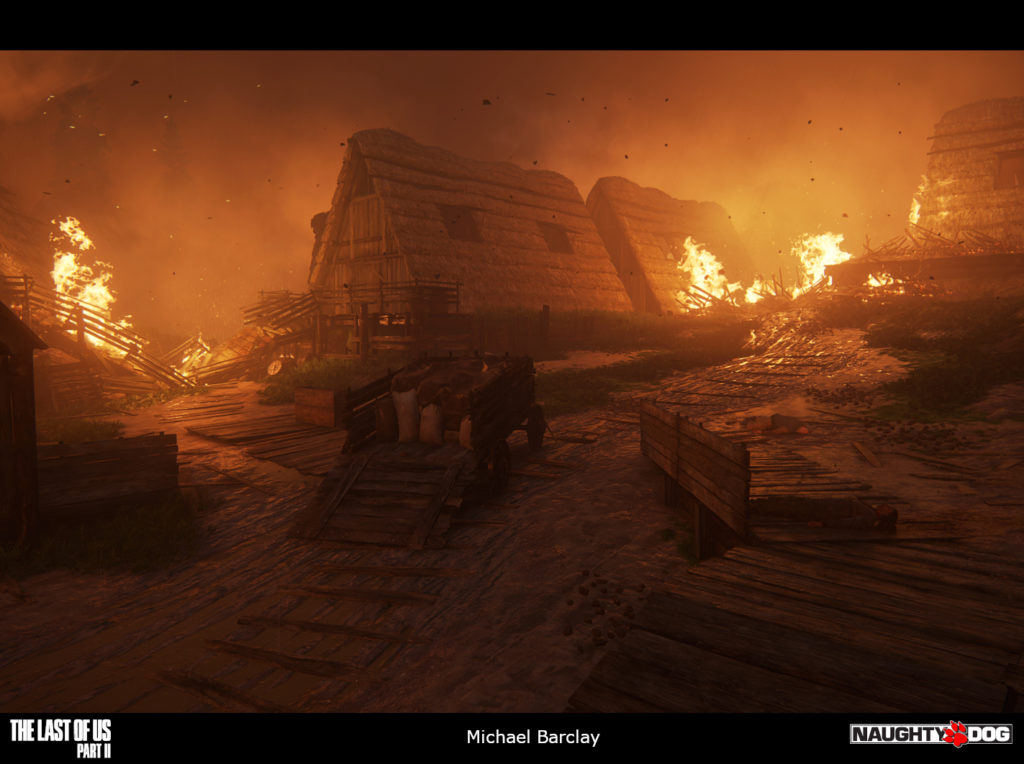
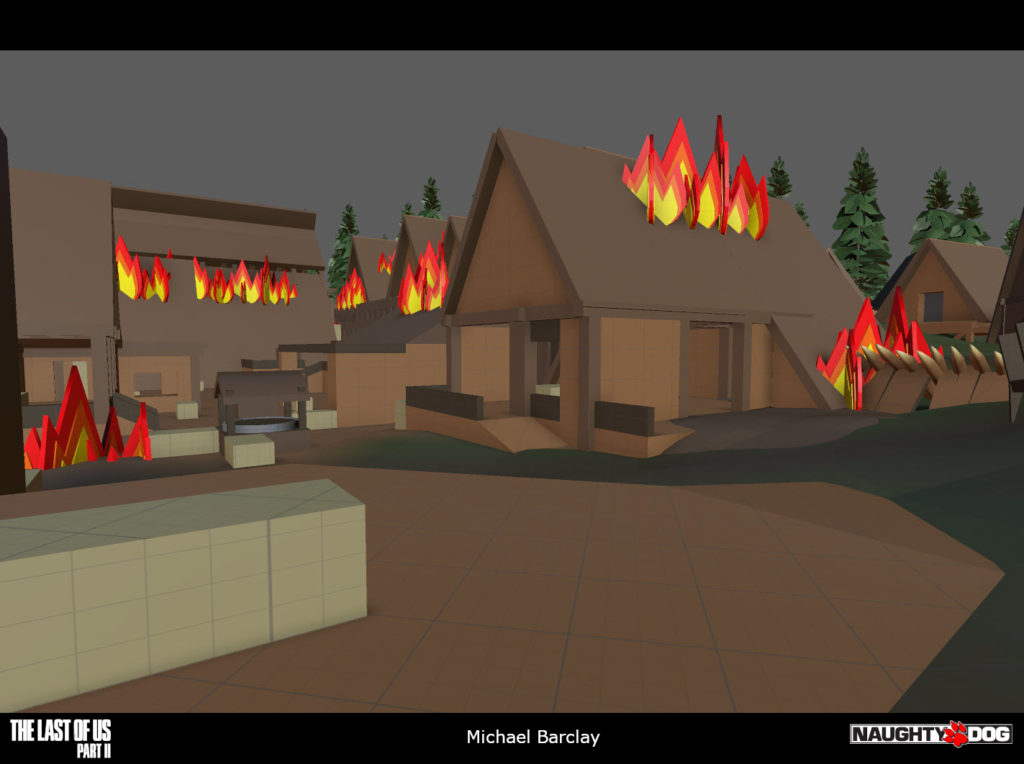
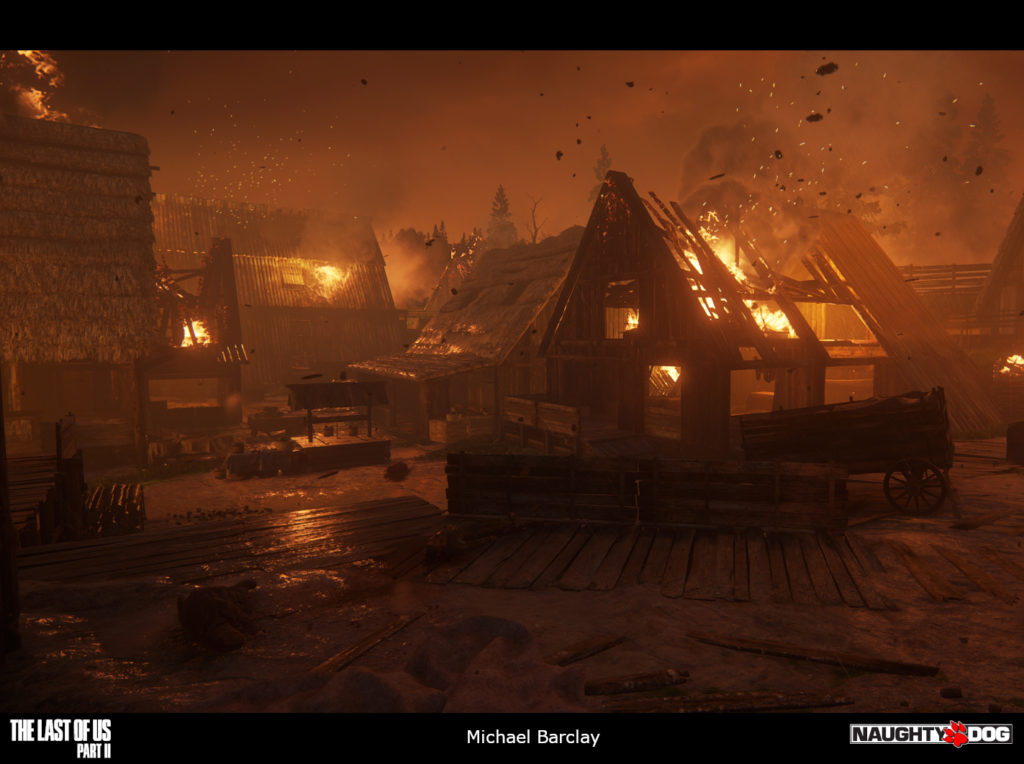
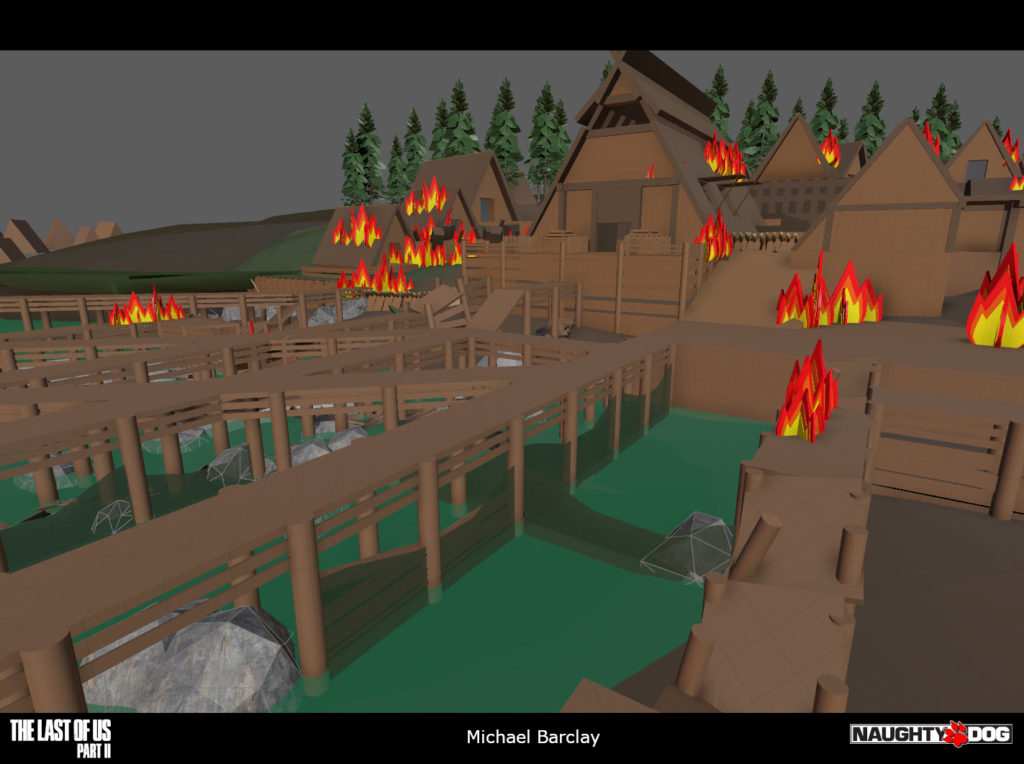






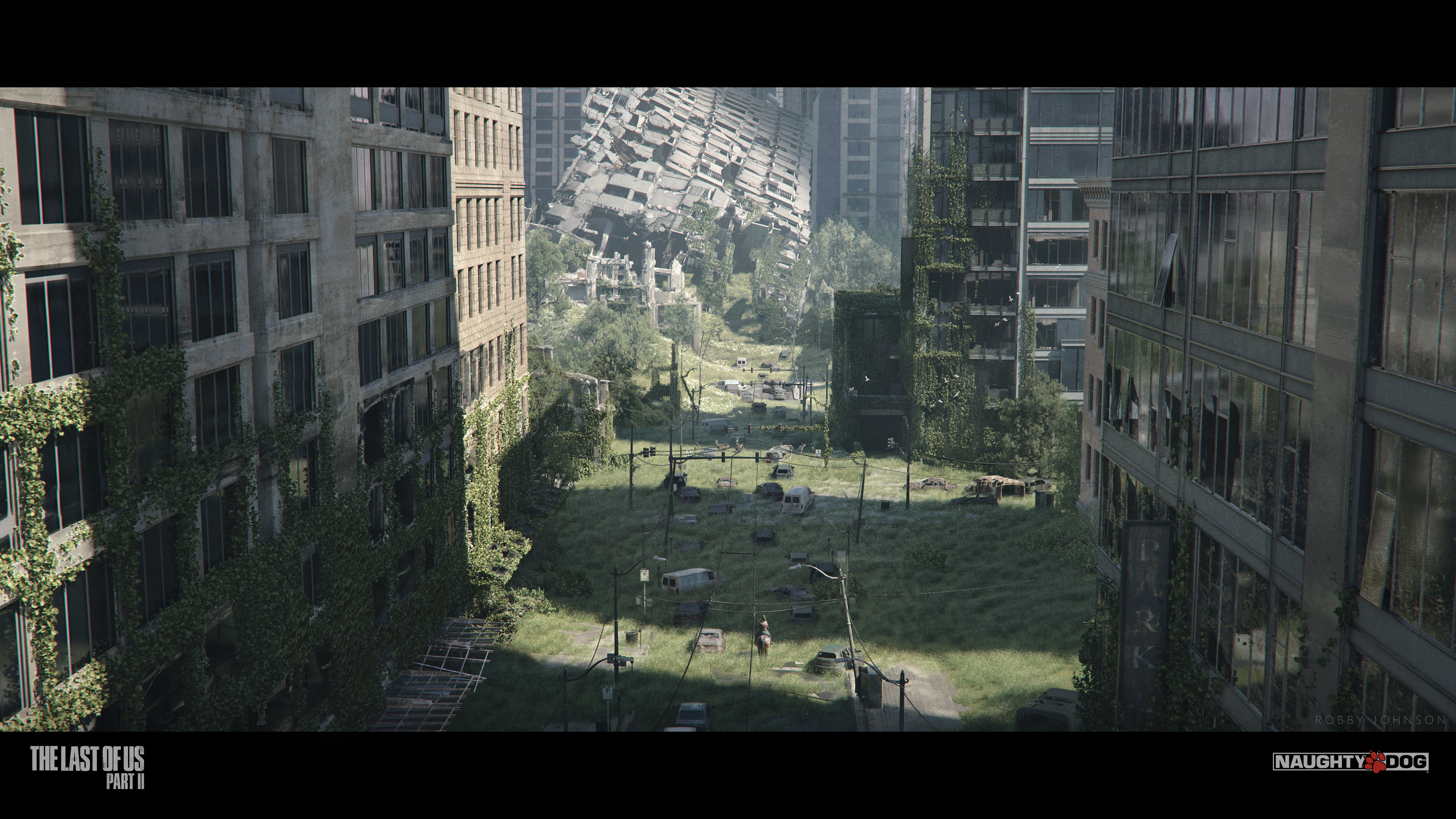









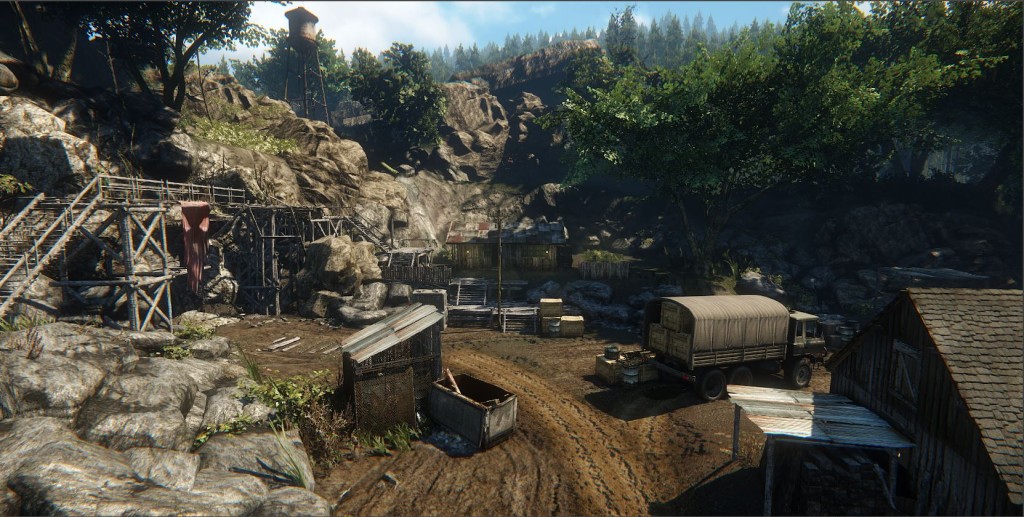










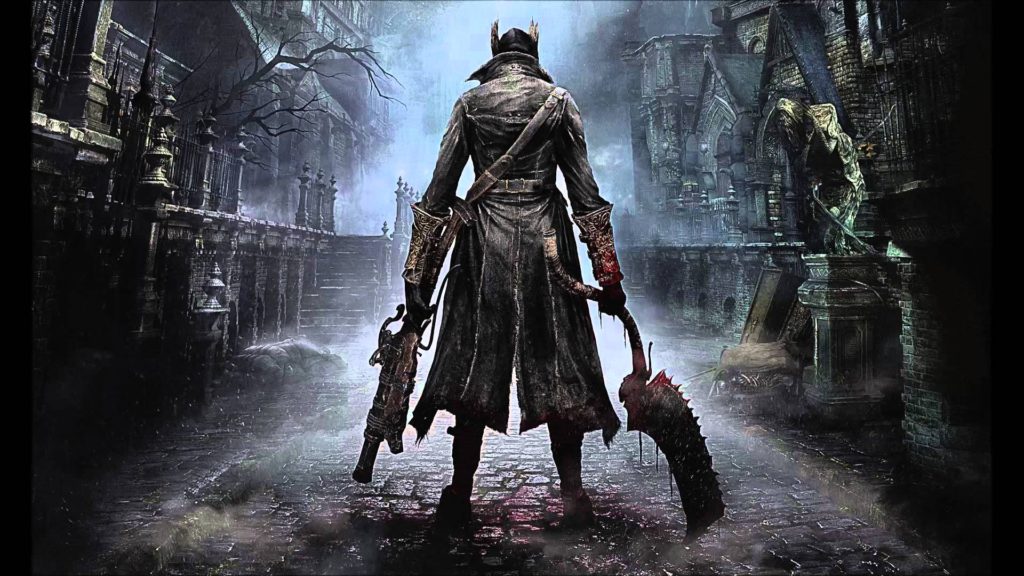
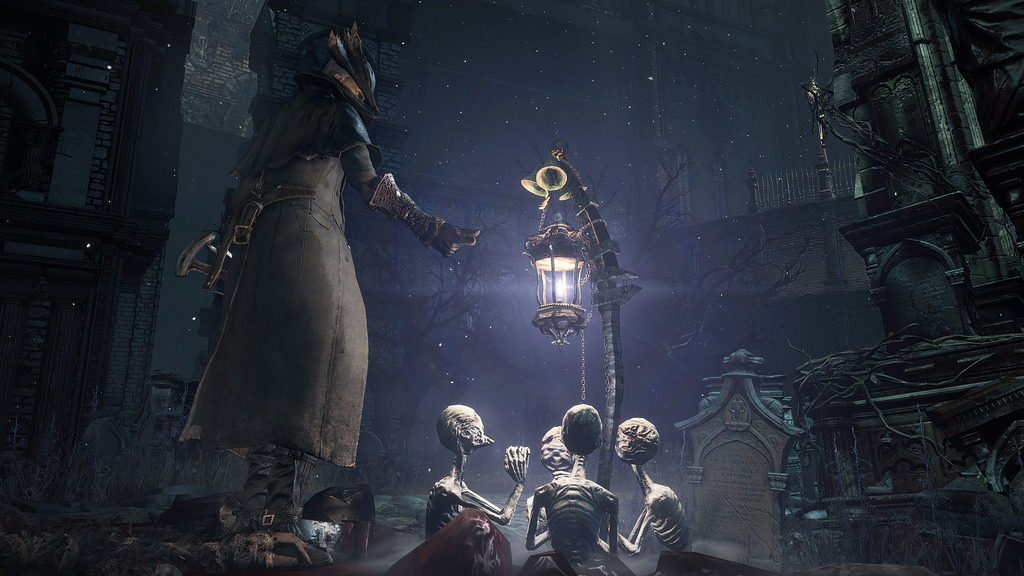


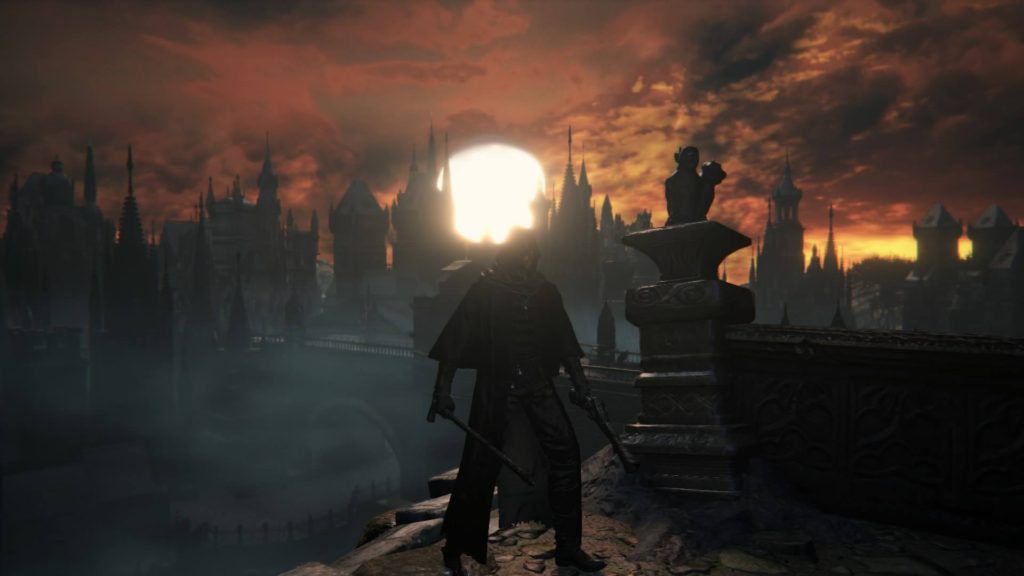
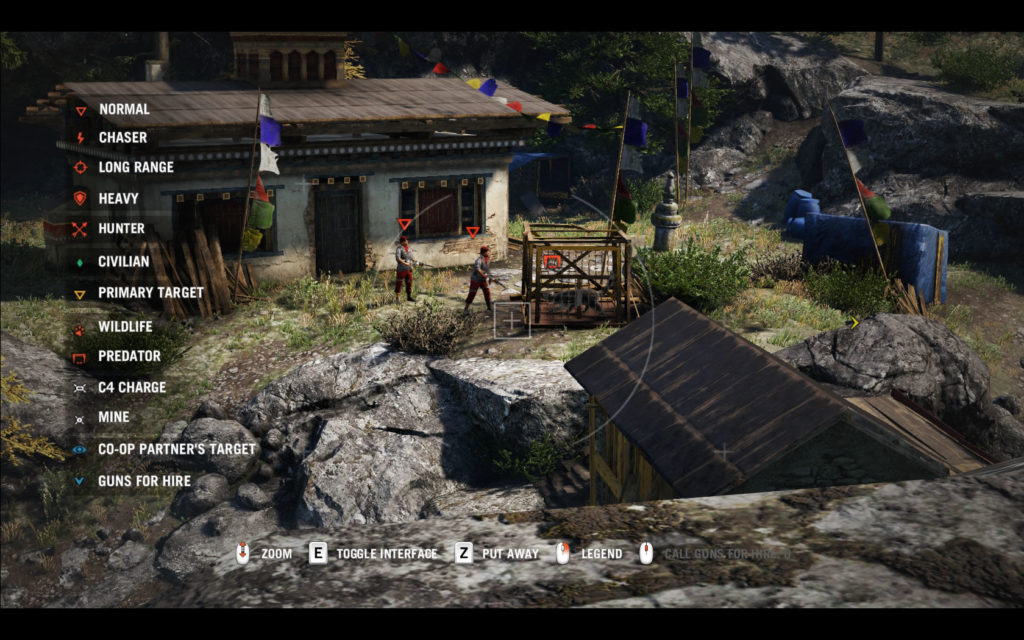
 Varied approach vectors. Having a single viable route into the encounter space would homogenize tactics, so often these spaces resemble multiplayer maps more than shooting galleries.
Varied approach vectors. Having a single viable route into the encounter space would homogenize tactics, so often these spaces resemble multiplayer maps more than shooting galleries. Crossfire opportunities and multiple fronts. Building multiple fronts of defense into the space allows AI to react to the player in an intelligent way and make combat fun from multiple directions.
Crossfire opportunities and multiple fronts. Building multiple fronts of defense into the space allows AI to react to the player in an intelligent way and make combat fun from multiple directions. Refuge spots and interior cover. Allowing the player to catch their breath or get some cover in a pro-active sandbox space is crucial as things don’t always go as planned.
Refuge spots and interior cover. Allowing the player to catch their breath or get some cover in a pro-active sandbox space is crucial as things don’t always go as planned.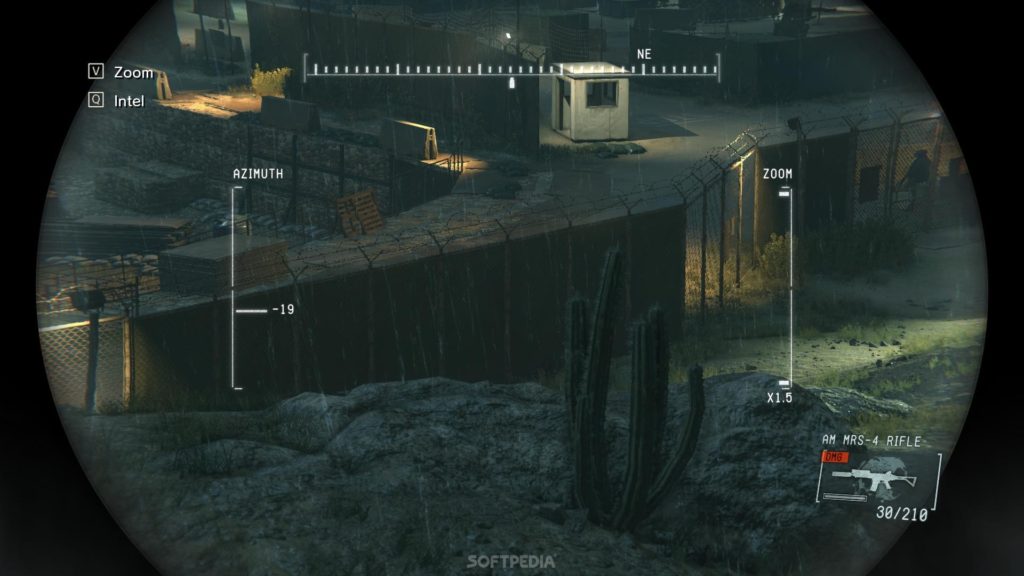 Usually we associate pro-active encounters with stealth, but pro-active gameplay doesn’t have to be the core experience of the overall title. The Last of Us, for example, has many varied encounter spaces, both pro-active and reactive. Knowing what kind of encounter to build relies heavily on the title you are developing as well as the pacing and emotional intent of the encounter. Pro-active spaces can promote empowerment as well as help increase a sense of tension.
Usually we associate pro-active encounters with stealth, but pro-active gameplay doesn’t have to be the core experience of the overall title. The Last of Us, for example, has many varied encounter spaces, both pro-active and reactive. Knowing what kind of encounter to build relies heavily on the title you are developing as well as the pacing and emotional intent of the encounter. Pro-active spaces can promote empowerment as well as help increase a sense of tension.


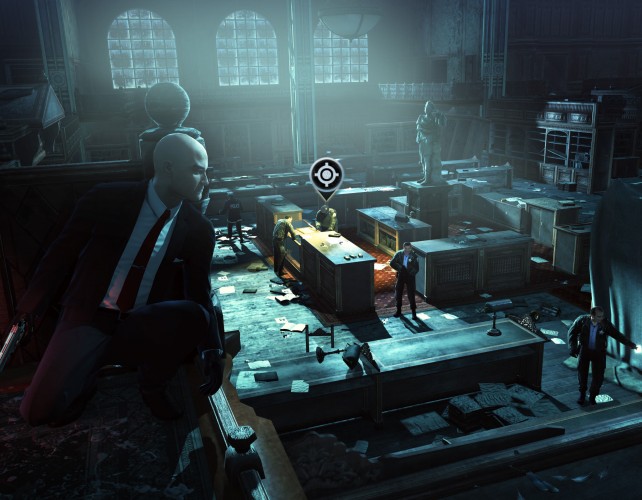 Using these techniques, level designers can create encounters that put players into the driving seat and find approaches that suit their own personal play styles.
Using these techniques, level designers can create encounters that put players into the driving seat and find approaches that suit their own personal play styles.
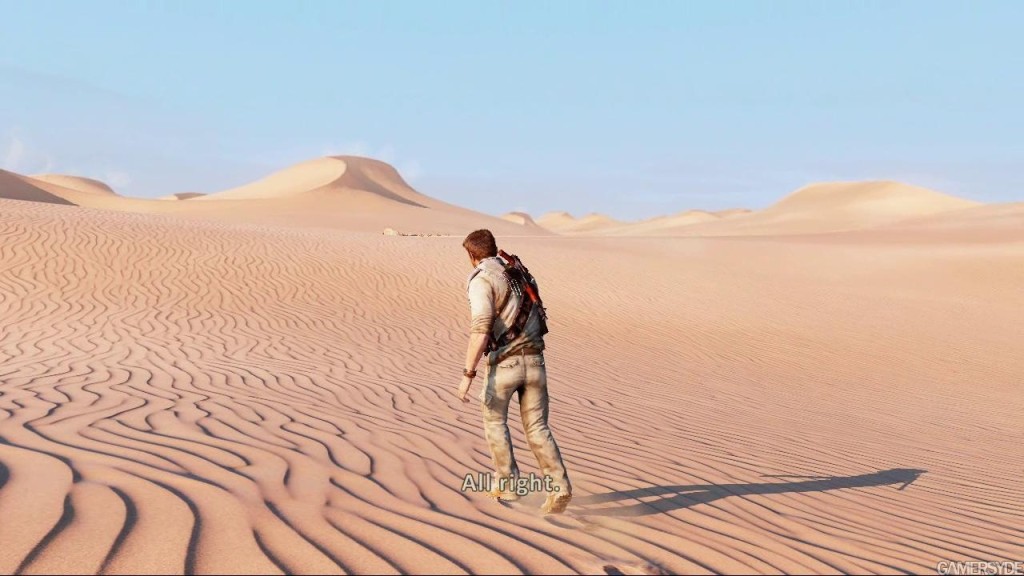
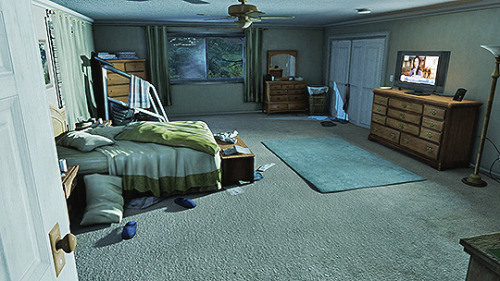
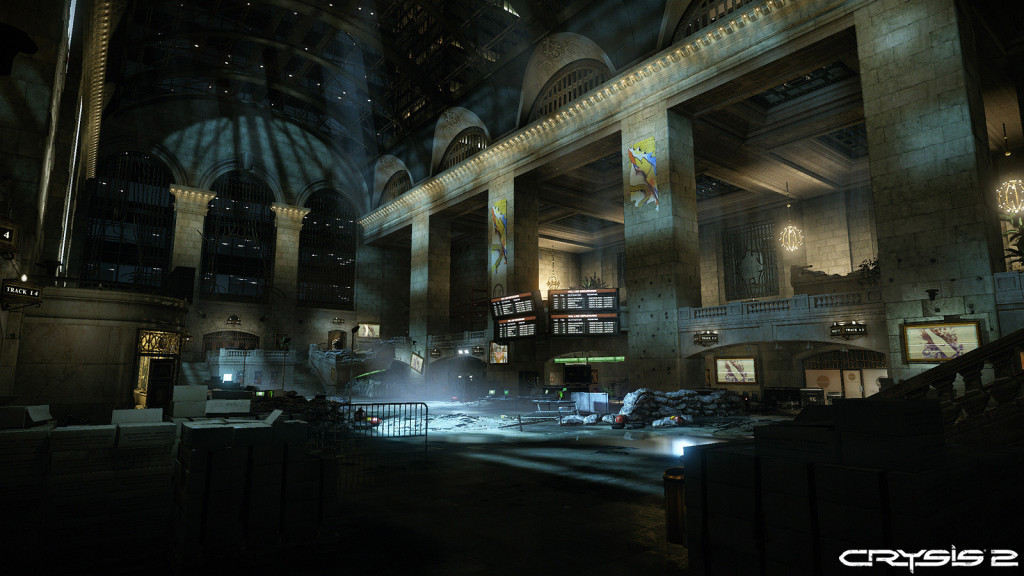
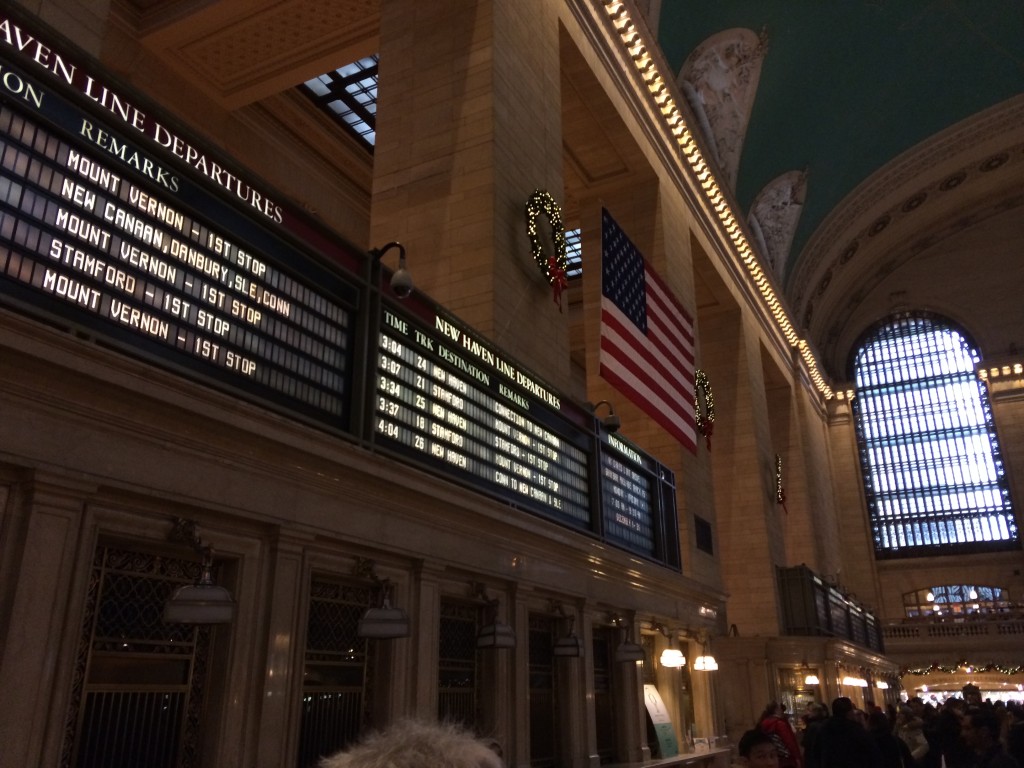

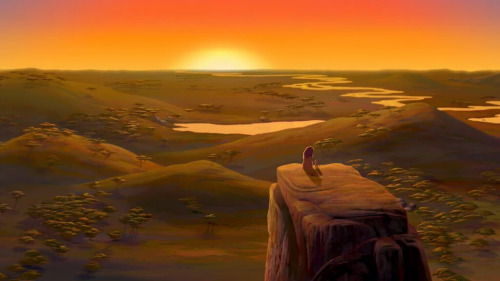
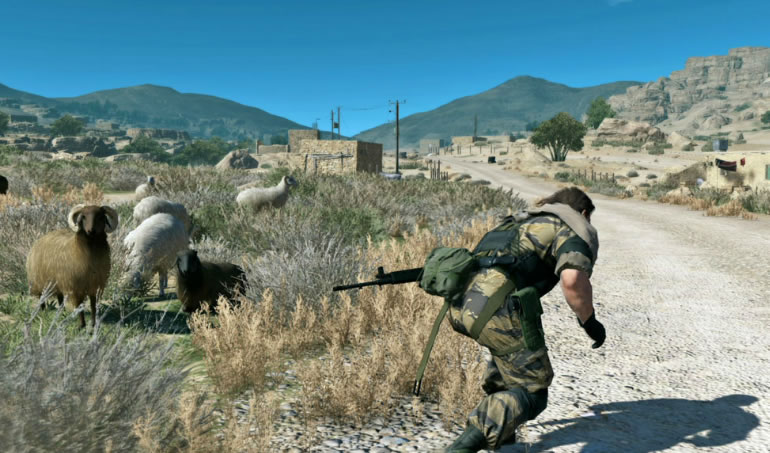
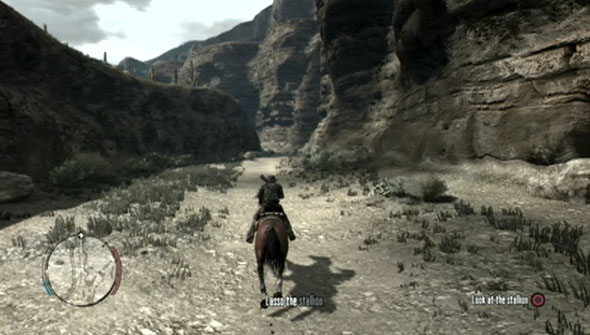




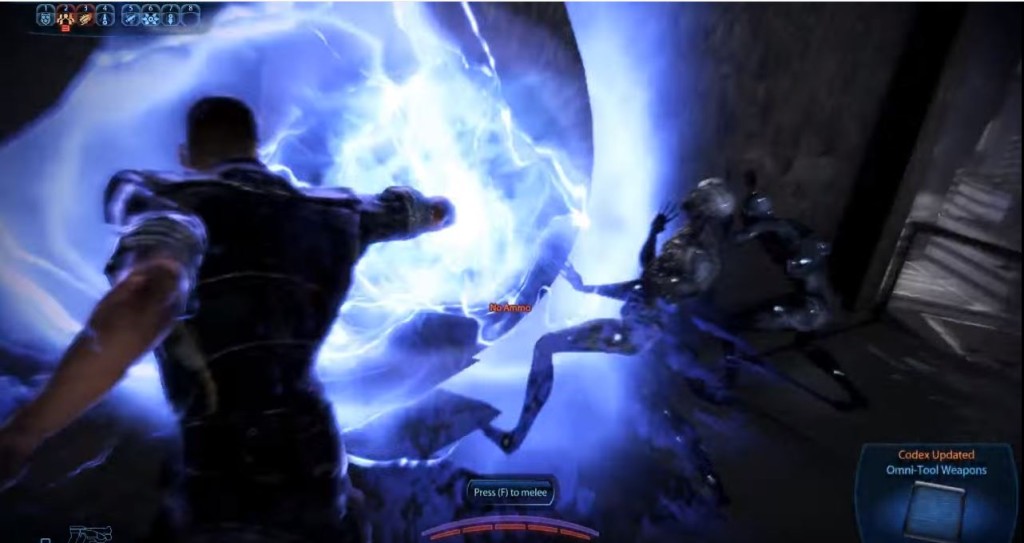 The final encounter in this sequence finally introduces a real threat to the player, allowing them to use what they have learned to overcome a small challenge. This cements their learning process and helps keep the tempo and tension of the narrative flow high. The approach vector of this enemy is still kept simple to keep the challenge at an appropriate level for this stage in the game. The enemy is also given plenty of foreshadowing through its reveal, by climbing up onto a ledge right in front of the player. Had the enemy leaped in from above or had another spectacular reveal, this may have startled the player or distracted them from the task of remembering how to dispatch the enemy.
The final encounter in this sequence finally introduces a real threat to the player, allowing them to use what they have learned to overcome a small challenge. This cements their learning process and helps keep the tempo and tension of the narrative flow high. The approach vector of this enemy is still kept simple to keep the challenge at an appropriate level for this stage in the game. The enemy is also given plenty of foreshadowing through its reveal, by climbing up onto a ledge right in front of the player. Had the enemy leaped in from above or had another spectacular reveal, this may have startled the player or distracted them from the task of remembering how to dispatch the enemy.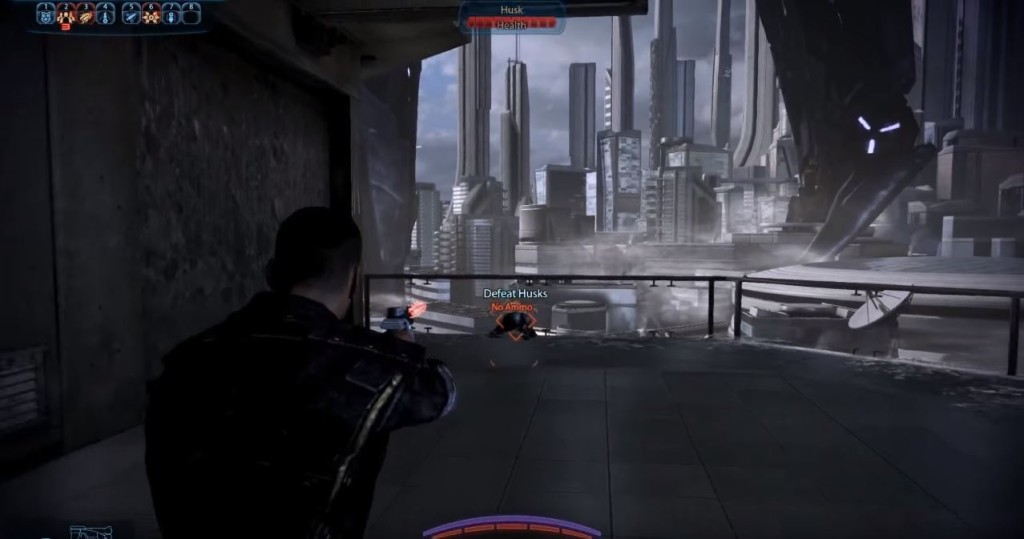 After dispatching this enemy, the player gets rewarded with an exhilarating cutscene of a reaper wrecking Shephards day by destroying earth.
After dispatching this enemy, the player gets rewarded with an exhilarating cutscene of a reaper wrecking Shephards day by destroying earth.